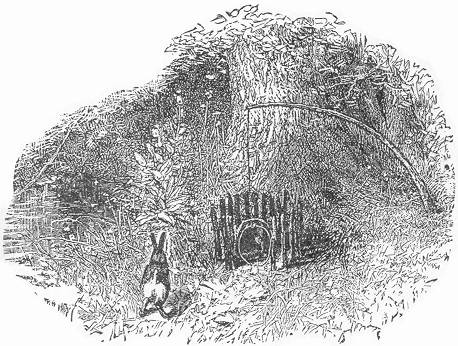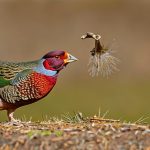Your cart is currently empty!

Unlock the Secrets: How to Hunt Rabbits Without a Gun and Boost Your Survival Skills!

Table of Contents
Introduction
Hey there, fellow hunter! If you’re reading this, chances are you’ve got a keen interest in the art of hunting, just like me. Over the years, I’ve had my fair share of big game hunts, but there’s something uniquely satisfying about hunting small game, especially rabbits. Now, before you jump to conclusions, no, I’m not talking about the usual gun-toting hunts. I’m diving into the age-old techniques of hunting rabbits without firearms. Sounds intriguing, right?
You see, our ancestors didn’t have the luxury of rifles and shotguns. They relied on their wit, knowledge of the land, and some pretty ingenious tools to catch their prey. And believe it or not, these methods are not just about nostalgia; they’re about boosting your survival skills. In a world where being adaptable is key, knowing how to hunt without a gun can be a game-changer (pun intended). So, whether you’re a seasoned hunter looking to diversify your skills or a newbie wanting to understand the basics, this guide is for you. Let’s unlock the secrets together and embark on this exciting journey of gun-free rabbit hunting!
Understanding Rabbit Behavior
Recognizing Rabbit Habitats and Signs
First things first, if you’re going to hunt rabbits without a gun, you’ve got to think like a rabbit. And that means understanding where they live and the signs they leave behind. Rabbits are creatures of habit. They love areas with plenty of cover to hide from predators, such as brushy fence lines, thickets, and the edges of fields. Look for well-trodden rabbit paths, droppings, and signs of nibbled vegetation. These are clear indicators that you’re in bunny territory. And if you spot a burrow or a warren, jackpot! That’s their home base.
The Best Times to Hunt: Dawn and Dusk
Now, onto the prime hunting times. Rabbits are crepuscular, which is just a fancy way of saying they’re most active during the twilight hours of dawn and dusk. This behavior helps them avoid many daytime predators and the midday heat. So, if you’re planning to hunt, set that alarm early or prepare for some evening action. The quiet of these hours, combined with the rabbits’ increased activity, gives you the best shot (pun intended) at a successful hunt.
Learning from Nature: Rabbit’s Natural Predators
Ever watched a nature documentary and marveled at the precision of a hawk swooping down on its prey or a fox stealthily stalking through the grass? Well, there’s a lot we can learn from these natural rabbit hunters. Observing how they operate can give us invaluable insights into hunting rabbits without firearms.
For instance, hawks use their keen eyesight from a vantage point, then swoop down quickly, catching the rabbit off guard. Foxes, on the other hand, rely on stealth. They move quietly, blending into their surroundings, and patiently wait for the perfect moment to pounce. Both methods require patience, observation, and understanding of the rabbit’s behavior.
So, the next time you’re out in the field, channel your inner fox or hawk. Use the environment to your advantage, be patient, and most importantly, learn from nature. After all, these predators have been perfecting their hunting techniques for millennia. We might as well take a page out of their playbook!
Tools and Techniques for a Gun-Free Hunt
Traditional Tools: Snares, Traps, and Nets
Before the age of firearms, our ancestors had to get creative when it came to hunting. And let me tell you, they were pretty darn ingenious. Snares, traps, and nets were some of their go-to tools for catching rabbits. Snares, made from cord or wire, are set up along rabbit paths to catch them as they pass through. Traps, like the classic box trap, use bait to lure the rabbit in, then trap it inside. And nets? Well, they’re a bit more hands-on. Think of them as a wide-reaching snare, perfect for areas with high rabbit activity.

Setting Up and Placement
The key to success with these traditional tools is all about location, location, location. Remember those rabbit signs we talked about earlier? That’s where you’ll want to set up. Place snares on well-trodden paths, ensuring they’re at the right height to catch a rabbit around its neck. For traps, find a spot where you’ve seen rabbit activity and use fresh vegetables as bait. As for nets, they’re best used in open areas where rabbits feed, giving you a broad range to catch them.

Modern Alternatives: Blowguns, Slingshots, and More
Now, if you’re looking for a bit more of a challenge and perhaps a touch of modern flair, there are some cool alternatives to consider. Blowguns and slingshots might sound like child’s play, but with the right technique, they can be deadly accurate. These tools require practice, but once you’ve got the hang of it, they offer a silent and effective way to hunt.
Tips for Accuracy and Safety
Safety first, always! When using blowguns or slingshots, ensure you’re in a safe area where there’s no risk of hitting others. Practice your aim on inanimate targets before heading out for the real deal. And remember, it’s all about patience and precision. Take deep breaths, focus on your target, and release only when you’re sure of your shot.
The Art of Stalking: Approaching Without Startling
Stalking is an age-old hunting technique that requires stealth, patience, and a keen understanding of your prey. When hunting rabbits without a gun, this skill becomes even more crucial. Move slowly, keep low to the ground, and use natural cover to your advantage. Watch the wind direction to ensure your scent doesn’t give you away. And most importantly, be patient. Wait for the rabbit to be engrossed in feeding or grooming, making your approach and strike when the time is right. Remember, it’s not about the chase; it’s about the strategy. Happy hunting!
Ethical and Sustainable Hunting Practices
The Importance of Hunting Only What You Can Consume
Hey there, fellow hunter! Let’s chat about something that’s close to my heart: responsible hunting. You see, hunting isn’t just about the thrill of the chase; it’s about respecting the balance of nature. One of the golden rules I’ve always followed is to hunt only what I can consume. It’s not just about being ethical; it’s about sustainability. Overhunting can quickly deplete rabbit populations, making it harder for us and future generations to enjoy the sport. Plus, there’s something deeply satisfying about knowing that the game you’ve caught will nourish you and your loved ones, rather than go to waste.
Quick and Humane Methods to Ensure Minimal Suffering
Now, onto a slightly touchy subject, but an essential one: ensuring our prey suffers as little as possible. We owe it to these creatures to make their end quick and painless. If you’re using snares or traps, check them regularly. A trapped rabbit left for too long can suffer needlessly. If the rabbit isn’t dispatched by the trap or snare, approach calmly and use a quick method, like a sharp blow to the back of the head, to end its suffering. It might sound harsh, but it’s the kindest thing to do in the situation.
Respecting the Ecosystem: Rotating Hunting Grounds and Seasons
Mother Nature is a delicate web of interconnected species and ecosystems. As hunters, we’re just one part of this vast system, and we’ve got a responsibility to tread lightly. One way to ensure we’re not putting undue pressure on rabbit populations is by rotating our hunting grounds. Don’t hammer the same spot over and over; give it time to recover and rabbit populations to replenish.
And let’s talk seasons. Sure, rabbit hunting might be open year-round in some places, but that doesn’t mean we should hunt them incessantly. Breeding seasons are especially crucial. Avoid hunting during these times to ensure that rabbit populations remain healthy and robust.
Related Questions
Can you eat wild rabbit? What are the precautions?
Absolutely, you can eat wild rabbit! They’re a lean source of protein and have been a staple in many cultures for centuries. However, a few precautions are in order. Always cook the meat thoroughly to kill any potential pathogens. Before cooking, inspect the liver for white spots, which could indicate the presence of tularemia, a disease you want to avoid. If you find any, it’s best to discard the rabbit. Better safe than sorry!
What are the most common mistakes beginners make when hunting rabbits?
Oh, where to start? Beginners often make the mistake of being too noisy or moving too quickly, which can spook the rabbits. They also might set traps or snares in areas with little to no rabbit activity, leading to empty hands at the end of the day. Another common error is not checking their traps regularly, which isn’t humane for the rabbit. Remember, patience and observation are key!
How can you differentiate between a healthy rabbit and a potentially diseased one?
Great question! A healthy rabbit will have bright, clear eyes and a lively demeanor. Its fur should be clean and free from bald patches or sores. On the flip side, a diseased rabbit might appear lethargic, have matted or patchy fur, or even show signs of neurological issues like stumbling or twitching. Always inspect your catch closely. If something seems off, it’s best to err on the side of caution and not consume the rabbit.
Summary
Well, there you have it, my fellow hunting enthusiast! We’ve delved deep into the world of hunting rabbits without the need for firearms, and I hope you’ve found this guide as enlightening as I did when I first started. Remember, hunting isn’t just about the thrill of the chase or the catch; it’s about connecting with nature, understanding our prey, and honing skills that have been passed down through generations.
The techniques we’ve discussed aren’t just about catching rabbits. They’re about survival, adaptability, and respect for the environment. Every time you set out on a hunt, you’re not just practicing a hobby; you’re participating in a tradition. And while guns have their place in the hunting world, there’s something incredibly rewarding about catching a rabbit using the same methods our ancestors might have used.
So, the next time you’re out in the wild, I challenge you to leave the gun behind and test out these techniques. Trust me; it’s a whole different ball game. Until then, happy hunting, and always remember to tread lightly and hunt responsibly. Cheers to many more adventures ahead!

Herb has been a longtime lover of the outdoors. Whether it be hunting, camping, fishing or just getting outside to reset. Proud father and animal lover. Bourbon anyone?

by
Tags:
Comments
3 responses to “Unlock the Secrets: How to Hunt Rabbits Without a Gun and Boost Your Survival Skills!”
-
[…] 2: Not Adapting to Rabbit Behavior:If you’re hunting based on winter rabbit patterns during the breeding season, you’re likely missing out. Adapting to their increased […]
-
[…] rabbits without a gun. Check out this informative article on Old Oak Syndicate’s website: How to Hunt Rabbits Without a Gun. It provides valuable tips and techniques for catching rabbits using alternative methods. Whether […]
-
[…] insights on how to track and catch rabbits without relying on firearms. Check out the article here to learn […]

Categories
- Big Game Hunting (301)
- Deer (202)
- Reviews (3)
- Shooting (16)
- Slingshot (1)
- Small Game Hunting (42)
- Upland Hunting (126)
- Waterfowl Hunting (3)





Leave a Reply